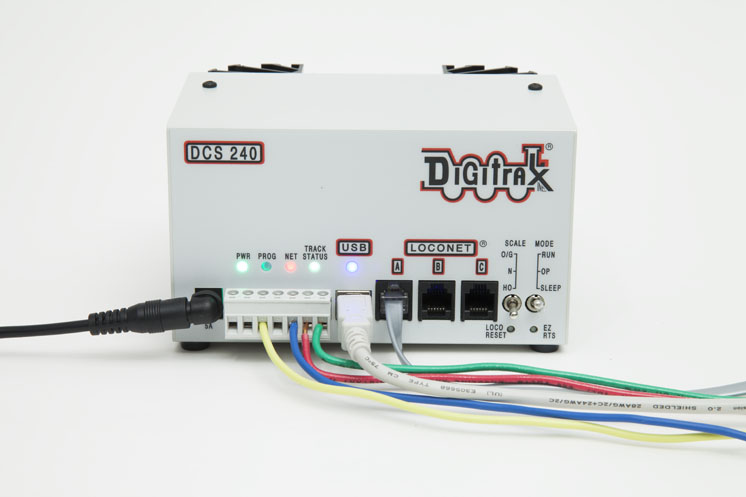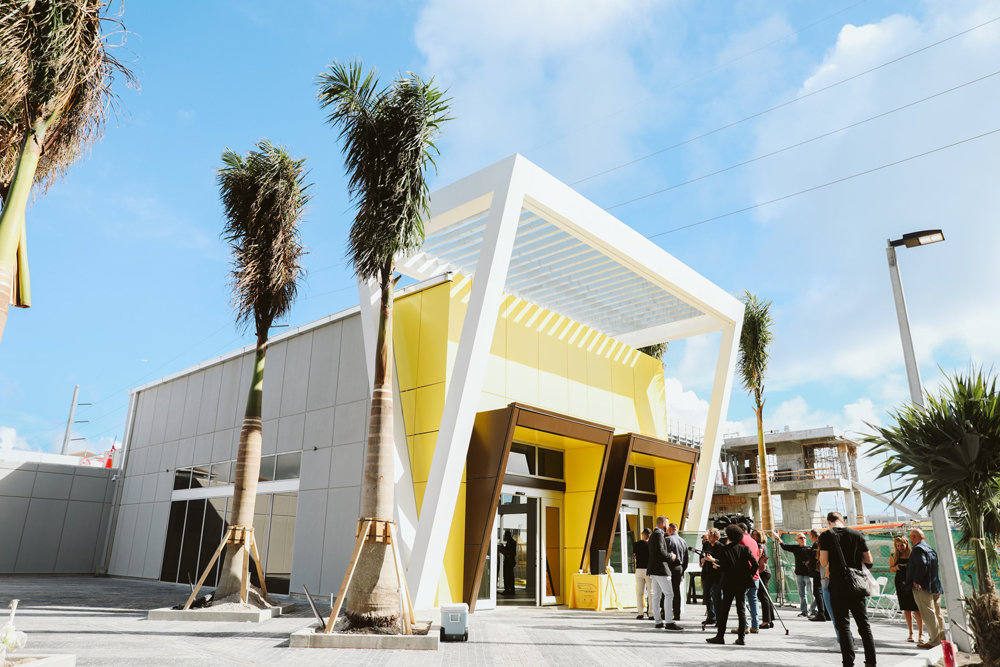It isn’t often that a DCC manufacturer releases a new command station, so the new Digitrax DCS240 has drawn interest. After all, their DCS100 and DCS200 command stations have been around for 20 and 16 years, respectively. The big attention grabber is the statement the unit can “run up to 400 locos and supports up to 400 throttles”. Although this increased capacity isn’t just advertising hype (prior units were limited to 120 slots), the real advantage is for large clubs and modular groups where a lot of different locomotives and throttles are used during operating sessions and meets.
Expanded capacity. Having 400 address slots means you can enter a lot of addresses without filling all the available slots. This is an important consideration, since the primary way to clear out the slots is to reset address and consist information using the option switch (OpSw) settings. OpSw settings allow you to customize various command station settings. In addition to OpSw 36 that completely clears the roster, a new “soft clear” OpSw command (38) sets all the speeds to 0 and turns functions off while leaving the roster and consist info intact. The DCS240 introduces a recessed reset button on the the face of the unit. The downside to this approach is it also wipes out all universal consists. Another option is to release individual slots using the slot manager tool in DecoderPro, part of the Java Model Railroad Interface software available as a free download at jmri.sourceforge.net.
To access these expanded slots you must have a DT402 throttle with firmware version 2.0 or later. DT402 throttles with earlier firmware can be upgraded using the DigiIPL program. This allows these advanced throttles to use the additional slots while freeing the others for use by older “legacy” throttles.
Computer interface. The combined USB port/PR3 computer interface allows quick updating of firmware and interfacing with computer programs. This means new Digitrax features can be added by simply updating firmware in much the same way that we update our cell phones, tablets, and personal computers. For example, during the review I was able to update our test DCS240 to clear up an issue with some legacy throttles. If you purchased a DCS240 before mid-September 2016 and experience any issues when using legacy throttles, you should consider downloading and installing the latest firmware version (www.digitrax.com/downloads).
The built-in PR3/USB interface also has other benefits. Digitrax provides a free software package on its website that includes the SoundLoader program for installing sound projects in sound decoders and the DigiIPL program for updating Digitrax firmware. In addition, the current version of DecoderPro (4.5.3) supports the DCS240, providing, among other things, the ability to change OpSw settings with a point-and-click interface.
Power supply and EZ Routes. Another big change introduced with the DCS240 is the requirement for a direct-current (DC)-only power supply. The power supply can be either 5 or 8 amps and should only be 1-3 volts higher than the desired track voltage. If more than 3 volts, the unit will enter safe mode and proportionally limit the maximum current. Digitrax and various others offer DC power supplies with 5 and 8 amp ratings. I used a 15VDC 8A unit. In addition to using a three-position scale-selector toggle on the front of the unit, you can fine tune track voltage using a throttle. This is much simpler than the old method that required removing the unit’s case and turning an adjustment potentiometer.
Another feature is the ability to create EZ Routes controlling several turnouts using accessory decoders. By sending a command to a single address, all the decoder-controlled turnouts in a route are thrown to the desired position. The DCS240 supports up to 64 routes with as many as 17 turnout addresses each. In addition, routes themselves can be nested to control up to 120 turnouts at a time. They can be activated using either a throttle or computer program. To make route creation easier, the unit has a button on the front that initiates the creation process.
Who should consider the DCS240? Although developed with an eye toward large clubs and modular groups, the DCS240 offers a lot of advantages over other Digitrax command stations. The ability to update the firmware is an important new capability that will allow new features to be added.
The dual power rating gives you the flexibility of operating with either a 5A or 8A power supply. Also, changes to the programming track output result in more reliable programming without the need for a programming track booster. The combined PR3/USB interface is another strong point. As a matter of fact, when you factor in the costs of a PR3 and a programming track booster along with a DCS100 or DCS200, the DCS240 is actually cheaper.
The powerful DCS240 is chock full of upgrades that will please Digitrax DCC fans.
Price: $375
Manufacturer
Digitrax, Inc.
2443 Transmitter Road
Panama City, FL USA 32404
www.digitrax.com
Features
▪▪Easy track voltage setting using throttle
▪▪EZ Routes setup button
▪▪Improved programming track output with higher voltage
▪▪Non-volatile flash memory – no internal batteries required
▪▪PR3 interface
▪▪Reset button for clearing mobile decoder information
▪▪“Soft clear” feature
▪▪Support for either 5- or 8-amp output depending on power supply used
▪▪Up to 400 locomotives and 400 throttles
▪▪USB port
▪▪User-updatable firmware















I am puzzled as to why Digitrax (and other US manufacturers) have not adopted a direct wireless internet connective component to their products? Given the proliferation of similar devices (and the adoption of internet connectivity by some non-US DCC manufacturers), this seems like a logical progression…and one that would foster interest in model railroading? Have I missed something?